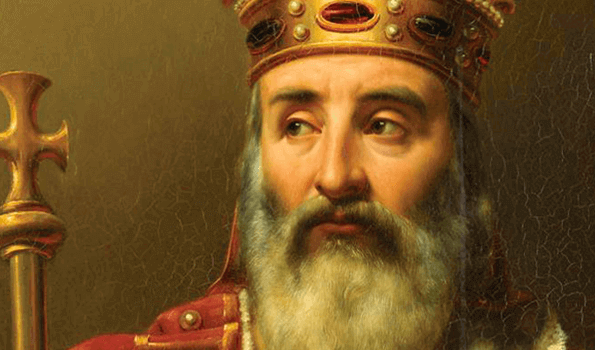The legend of Charlemagne is one of the most revealing and interesting stories of Italo Calvino, this wonderful son of Italians of Cuban origin has left an impressive testimony of his acute sensitivity and his clear intelligence in this mini-story.
Calvin has always wandered between radical realism and overflowing imagination, Charlemagne’s legend is a good example, starting from a fantastic and almost unlikely story, manages to capture a deep and analytical vision around passionate love.
- Much of Calvin’s work has a touch of fable.
- In this group the legend of Charlemagne can be classified.
- But in this case the objective goes far beyond the moral.
- The story makes an impressive revelation about the love of a couple.
- On the subject.
- Italo Calvino’s position is very similar to that of contemporary psychoanalysis.
“We love the person who protects us or a narcissistic image of ourselves. -Jacques Alain Miller-
Charlemagne’s legend begins: “Emperor Charlemagne fell in love, now older, with a young German woman. The nobles of the court were very concerned that the sovereign, possessing a burning love and having forgotten the real dignity, was neglecting the affairs of the Empire.
Interestingly, Italo Calvin chose an older and more powerful man as his main character, apparently this is the antithesis of this teenage posture where love surpasses everything, besides being an emperor, when he falls in love, he looks fat. to everything else.
That’s why the nobles are worried. Power and love are not two compatible realities, even if they sometimes go hand in hand; in this case, love is imposed on power, an issue that endangers the whole empire, this is just the beginning of the amazing events that follow.
After falling so deeply in love, the unthinkable happens: the beloved young woman dies suddenly. Legend has it that love did not die with her, the emperor, blinded by pain, took the embalmed corpse into his room and did not want to part with him for a moment from that inert body.
The story goes on to state: “Archbishop Turpin, frightened by this macabre passion, suspected a spell and wanted to examine the corpse. Hidden under the woman’s tongue, he found a ring with a precious stone.
Then it was discovered that love actually hid a spell. Finally, Charlemagne was not so in love with the young German. What had happened was a work of magic, not a real feeling.
Italo Calvino begins to reveal here the true nature of love, there is something that your loved one saw, but it is not himself, the lover falls in love with what he is wearing, not the person himself. I would say that love is the activation of a magical element, not in a poetic sense, but literally. To love, we give a lot in relation to the rules of logic and begin to feel the impossible, hoping to make it come true.
The end of Charlemagne’s legend could not be more surprising and disturbing. What happened after the archbishop found the ring was: “As soon as Turpin took the ring into his hands, Charlemagne ran to the funeral of the corpse and directed his love to the person. archbishop’ office. To get out of the embarrassing situation, Turpron threw the ring into Lake Constance. Charlemagne fell in love with Lake Constance and never wanted to leave its shores.
In this last part the nature of that fiery love that did not give rise to reason is definitively revealed, in the end, Charlemagne did not care what the object of his love was, so he falls in love with the archbishop and then the lake. , which he always loved. The secret of everything was in the magic ring.
The ring is a figure in which there are edges, but in the center there is nothing, it is a circle that delimits the void. But it has a precious stone, something that shines, that attracts, that dazzles, at last, is or is love as some people characterize it, an attempt to put a limit to emptiness, to nothingness. a real existence in people and even determines their lives. Passionate love is born, grows and dies in the imagination.

